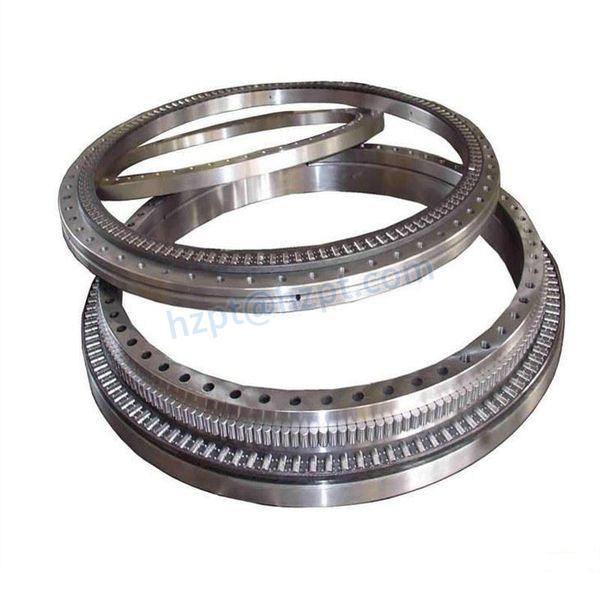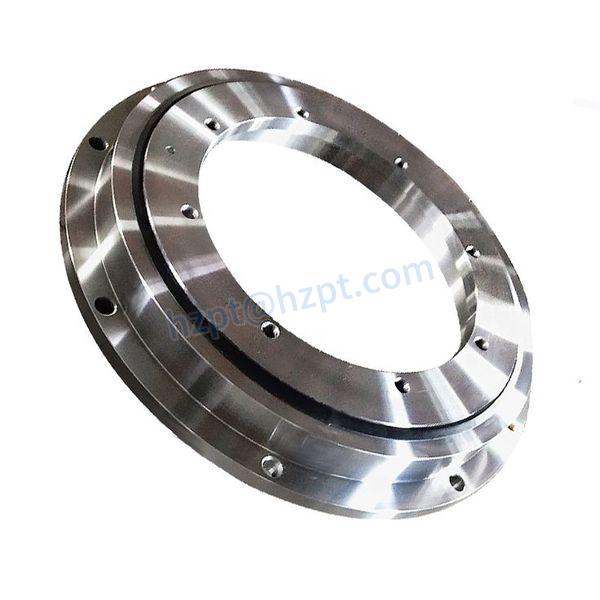Product Description
| Name | Tapered Roller Bearings |
| Brand | MONTON |
| Model |
32930 |
| d |
150mm |
| D |
210mm |
| T |
38mm |
| Ring Material | Gcr15/ Carbon Steel |
| Cage Material | Steel cage |
| Load rating Ca |
346kN |
| Load rating Coa |
530kN |
| Reference speed |
2200r/min |
| Limiting speed | 2800r/min |
| Sealed | as customer requested |
| Weight |
3.95KG |
| Bearing Arrangement | Single Row/Double Row/Triple Row/Quadruple Row |
| Design Structure | Tapered Roller |
| Precision | P4,P5,P6,P0 or as customer requested |
| Vibration | ZV1, ZV2, ZV3, or as customer requested |
| Clearance | C0, C2, C3, or as customer requested |
| Quality standard | ISO9001: 2000/SGS |
| Package | single box/wooden case |
| Original | HangZhou |
| Service | OEM |
| Delivery date | Accordingly |
| Application | Front wheel, rear wheel, transmission, differential pinion shaft of a car. Gear reduction devices for machine tool spindles, engineering machinery, large agricultural machinery, railway vehicles, rolling mill journals, and reduction devices. |
Introduction:
Tapered roller bearings have tapered inner and outer ring raceways as well as tapered rollers They are designed to accommodate combined loads, i.e. simultaneously acting radial and axial loads The projection lines of the raceways meet at a common point on the bearing axis to provide a true rolling action and therefore low frictional moments during operation The axial load carrying capacity of tapered roller bearings increases with increasing contact angle α The size of the contact angle, which is usually between 10° and 30°, is related to the calculation factor e : the larger the value of e, the larger the contact angle.
Bearing feature:
1.Low friction
2.Long service life
3.Enhanced operational reliability
4.Consistency of roller proiles and sizes
5.Rigid bearing application
6.Running-in period with reduced temperature peaks
7.Separable and interchangeable
/* January 22, 2571 19:08:37 */!function(){function s(e,r){var a,o={};try{e&&e.split(“,”).forEach(function(e,t){e&&(a=e.match(/(.*?):(.*)$/))&&1
| ID: | 150mm |
|---|---|
| Od: | 210mm |
| T: | 38mm |
| Weight: | 3.95kg |
| Transport Package: | Single Box |
| Specification: | 32930 |
| Customization: |
Available
| Customized Request |
|---|

Are there any Notable Advancements in Slewing Bearing Technology in Recent Years?
In recent years, there have been several notable advancements in slewing bearing technology, driven by the demand for improved performance, efficiency, and durability. Some key advancements include:
- Enhanced Materials:
New material compositions, coatings, and surface treatments have been developed to improve the corrosion resistance, wear resistance, and overall longevity of slewing bearings. These advancements enable bearings to perform reliably in harsh environments.
- Integrated Sensors:
Advancements in sensor technology have led to the integration of sensors within slewing bearings. These sensors monitor parameters such as temperature, load, and vibrations, providing real-time data for predictive maintenance and improving overall operational efficiency.
- Sealing and Contamination Control:
New sealing technologies and designs have been introduced to enhance the sealing effectiveness of slewing bearings, preventing the ingress of contaminants and extending bearing life. These advancements are particularly beneficial in industries with demanding environmental conditions.
- Smart Lubrication Systems:
Advanced lubrication systems have been developed, incorporating features like automatic lubrication and condition-based lubrication. These systems optimize lubrication levels, reducing friction and wear, and contributing to longer bearing life.
- Improved Manufacturing Techniques:
Precision manufacturing techniques, such as advanced machining and forging methods, have improved the consistency and quality of slewing bearings. This results in bearings with tighter tolerances, better load distribution, and enhanced performance.
- Finite Element Analysis (FEA) and Simulation:
FEA and simulation software have been employed to model and analyze the behavior of slewing bearings under various conditions. This technology aids in optimizing bearing design, load distribution, and durability.
- Customization and Tailored Solutions:
Manufacturers are increasingly offering customized slewing bearing solutions to meet specific application requirements. This includes designing bearings for unique loads, dimensions, and operating conditions.
- Digitalization and Industry 4.0 Integration:
Integration with Industry 4.0 principles has led to the development of connected and digitally-enabled slewing bearing solutions. This enables remote monitoring, data analysis, and predictive maintenance strategies.
These advancements collectively contribute to more reliable, efficient, and durable slewing bearings, meeting the evolving needs of industries across the board.

Can you Provide Examples of Industries where Slewing Bearings are Crucial Components?
Slewing bearings play a vital role in various industries due to their ability to handle complex loads and rotational movements. Here are some examples of industries where slewing bearings are crucial components:
- Construction Industry:
Slewing bearings are used in construction machinery such as cranes, excavators, and concrete pumps. They enable the movement of heavy loads, contributing to efficient construction operations.
- Wind Energy Industry:
In wind turbines, slewing bearings allow the rotor blades and nacelle to rotate for optimal wind capture. Their durability and load-bearing capacity are essential for reliable wind turbine operation.
- Mining Industry:
Slewing bearings are employed in mining equipment like stacker-reclaimers and conveyor systems. They facilitate the movement of large quantities of materials, contributing to efficient mining operations.
- Marine Industry:
Slewing bearings are used in ship cranes, davits, and other marine equipment for cargo handling and maintenance tasks. They play a crucial role in maritime operations.
- Aerospace Industry:
Slewing bearings find applications in aerospace equipment like aircraft landing gear systems, satellite antenna deployment mechanisms, and more.
- Manufacturing Industry:
Industrial robots and automation systems utilize slewing bearings for precise rotational movement, enhancing manufacturing processes.
- Material Handling Industry:
Slewing bearings are crucial in material handling equipment such as conveyor systems, container cranes, and automated storage and retrieval systems.
- Energy Industry:
In the energy sector, slewing bearings are used in equipment such as solar trackers, tidal energy platforms, and hydroelectric power plants.
- Medical Industry:
Some medical imaging equipment like CT scanners and MRI machines use slewing bearings for rotational movement, contributing to accurate diagnostics.
- Entertainment Industry:
In theme parks and entertainment venues, slewing bearings are used in amusement rides that require controlled rotational movement.
- Automotive Industry:
Slewing bearings can be found in various automotive applications, such as car turntables and components in heavy-duty vehicles.
These are just a few examples of the diverse industries where slewing bearings are crucial components, contributing to the efficient operation of machinery and equipment.

What are the Main Applications of Slewing Bearings?
Slewing bearings find wide applications across various industries due to their ability to handle complex loads and facilitate rotational movement. Some of the main applications of slewing bearings include:
- Construction Machinery: Slewing bearings are essential components in construction equipment such as excavators, cranes, concrete pumps, and drilling rigs. They enable smooth rotation and movement, supporting heavy loads and dynamic forces.
- Wind Turbines: In wind energy systems, slewing bearings are used to orient the rotor blades and nacelle to capture maximum wind energy. Their durability and load-bearing capacity make them crucial for efficient wind turbine operation.
- Mining Equipment: Slewing bearings are used in mining machinery like stacker-reclaimers and conveyor systems. They enable the movement of large loads, contributing to efficient material handling and processing.
- Marine Applications: Slewing bearings are employed in ship cranes, davits, and other marine equipment. They assist in cargo handling, ship maintenance, and various onboard operations.
- Aerial Work Platforms: Slewing bearings are integral to aerial platforms and access equipment. They enable controlled and safe movement for workers at elevated heights.
- Robotics and Automation: Slewing bearings play a role in industrial robots and automation systems. They facilitate precise and controlled rotational movement in manufacturing processes.
- Medical Equipment: Some medical imaging equipment, such as CT scanners and MRI machines, use slewing bearings for rotational movement, contributing to accurate diagnostics.
- Defence and Aerospace: Slewing bearings are employed in defense equipment like radar systems and missile launchers, as well as in aerospace applications like aircraft landing gear.
These are just a few examples of the many applications of slewing bearings across different industries. Their ability to handle diverse loads and rotational movements makes them versatile components in various machinery and equipment.


editor by CX 2024-05-06
by
Tags:
Leave a Reply